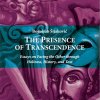The origin of the ecclesial presence in the U.S.A. of the Serbian people began in the middle of the 19th century, as Serbs began to immigrate to the North American Continent. Most of the immigrants at that time were from the areas of Austria-Hungry, Dalmatia and Montenegro. With hundreds of new immigrants from 1892-1901, the first church communities were established in California and in parts of the South. The parishes that formed during this time generally were served under the multi-ethnic Russian North American mission, led by the Russian Orthodox Archbishop in New York. Atop the highest hill in the city of Jackson, California, the first Serbian parish was established by Archimandrite Sebastian Dabovich—the first U.S. born Orthodox priest. Consecrated in 1894 by Bishop Nikolai, the Russian Archbishop of Alaska and North America, it is believed to be the oldest Serbian church in U.S.A.
.Major “personalities” who significantly contributed to the growth of the Church during those early years were: Sebastian Dabovich mentioned above, Saint Nicholai Velimirovich, Bishop of Ohrid and Žiča, who with his many attributes is regarded as an Enlightener of the Americas, and Bishop Mardarije Uskokovic, sent to Serbs by the Russian Metropolia.
The Serbian Orthodox Church was officially established in the U.S.A. in 1921 by Demetrios, Patriarch of Serbia, and the first ruling bishop of the new diocese, Mardarije (Uskokovic), begin his episcopal work in 1927. The See of the Diocese was established at the St Sava Monastery, which bishop Mardarije himself founded in Libertyville, IL.
Bishop Mardarije quickly organized the diocese, despite an advancing case of tuberculosis, resulting in his death on December 12, 1935 at the age of 47. After his death, the diocese was administered for two and a half years by Bishop Dr. Irinej (Djordjevic) of Dalmatia, and in 1938, Bishop Dr. Damaskin (Grdanicki) of Muckacevo-Prjasevo was elected as the second bishop of the American-Canadian Diocese. Under his leadership, the Church Constitution of 1927 was revised and expanded. At this time the See of the Diocese was moved to Chicago. In 1939, Bishop Damaskin was elected to the Diocese of Banat and Dionisije (Milivojevic), Bishop of Moravica was elected Bishop of America and Canada.
Taking into account the growing needs and requests of the majority of the clergy and people of the Diocese, the holy Assembly of bishops in 1963, established three dioceses in the U.S.A. and Canada. This action was coupled with the suspension and ultimate deposition of Bishop Dionisije (Milivojevic), which brought on a tragic division among the Serbian Orthodox in America. The establishment of three dioceses in place of the single Diocese in 1963, however, was a natural result of its process of growth and maturing. In order to enable a common work on a wider, national scale, the Episcopal Council, Central Church Council and Church Assembly (Sabor) were also established as governing bodies for the Church.
Bishop Firmilian (Ocokoljic), who had been the Epicopal Deputy to Bishop Dionisije became the bishop of the new Midwestern Diocese. Despite very difficult circumstances, the diocese was organized and continued to grow. The Diocesan See once again was established at St. Sava Monastery in Libertyville in 1979, when the original St. Sava Monastery Church was renovated. Bishop Firmilian’s successor was Christopher (Kovacevich), who later, in 1992, was elevated to the rank of Metropolitan and the Diocese to the rank of Metropolitanate.
The Western Diocese received as its founding hierarch Bishop Gregory (Udicki). The See of the Diocese, Saint Steven’s Cathedral in Alhambra, was dedicated as “the Cathedral of the Pacific.” The parishes of this diocese, widely separated by the great distances of the American West, had a special need for a diocesan bishop close to them, who would be able to address their needs and concerns and bind them into a body. Successor bishops in this diocese include Chrysostom (Stolic), Jovan (Mladenovic) and Maxim (Vasiljevic).
The Eastern American and Canadian Diocese was headed at the beginning by Bishop Stefan (Lastavica). Bishop Stefan was able to organize the diocese in the brief time before his untimely death in 1966. In 1967, Bishop Sava (Vukovic) was elected to fill the vacant Diocese. Property was purchased in Richfield, Ohio for a diocesan center and monastery. Missionary work helped establish new parishes, particularly in Canada and the South. In 1974 an imposing building in Sewickley, Pennsylvania was purchased become the Diocesan See. In 1978, Bishop Sava was succeeded by Bishop Christopher (Kovacevich), who in 1992 became Metropolitan of the Midwest Metropolitanate. The succeeding bishop of the Eastern American Diocese became Bishop Mitrophan (Kodic), who continued the progress of the diocese. Eventually, the See of this diocese was moved to Mars, PA.
Under the initiative and guidance of Serbian Patriarch Pavle, in 1992 was the year of reunification of the Church on this Continent, healing the division of 1963. That year, the proclamation of Eucharistic unity became the first step in fulfilling the unity of the church’s organization in America. Subsequently, on May 21, 2009 the Holy Assembly of Bishops, rendered the decision to unite into one administration and restructure the existing dioceses so that the «canonical» territory of the Serbian Orthodox Church in North and South America now consists of the following dioceses: The Metropolitanate of Libertyville-Chicago; The Diocese of New Gracanica-Midwestern America, the Diocese of Eastern America, The Diocese of Western America, and The Diocese of Canada.
The presence of new members who have embraced Orthodoxy coupled with a new wave of Serbian immigrants to USA in the 1990’s, greatly multiplied the number of faithful. Today, the Serbian Orthodox Church in America has over 140 parishes, 15 missions, and 14 monasteries, as well as a theological school.
Serbian Orthodoxy considers the dynamic pulse of its Eucharistic life as the measure of its maturity, success and achievements. The Serbian Orthodox Church in America has achieved a significant ecclesiological-societal level that faithfully reflects the Church’s consciousness. This awareness is maintained through indistinguishable ecclesial and national components, which have important consequences in the unfolding history and life of the Church. The Church continues to fulfill Saint Nicholai’s (Velimirovic) vision of the need for the “inculturization” and contextualizing of the Evangelical message of the Resurrected Christ. This effort has encouraged many to preach and witness the Gospel in ways which meet the cultural needs of the people through the salvific truth of Christ, revealed and given in His Body, the Church.




